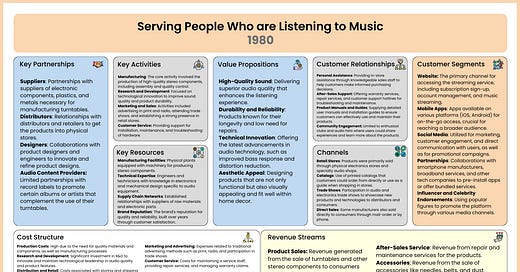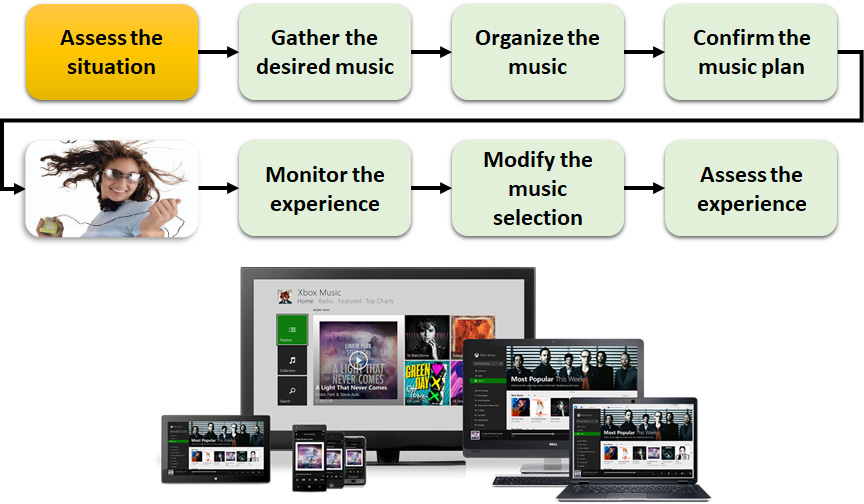Was the iPhone a product, or a business model?
Remember when you were a child and had that wild imagination? Anything was possible!
You imagined things that were magical because you didn’t know exactly how it could happen. You just knew you wanted it to be real.
Before airplanes people might have imagined being on another continent in hours instead of weeks or months - but couldn’t describe how to do it.
Before the Internet and steaming music, people might have imagined being able to hear what they wanted, when they wanted - but couldn’t describe how to do it
Before AI, people may have imagined getting an immediate answer to a question regardless of the context - but couldn’t describe how to do it
I recall imagining a complete computing and communication solutions running in my brain and projecting onto my eyeballs in the late 1980s when I had my first PC Windows 1.0 running on it - but I couldn’t describe how to do it.
That could never happen!
In the world of innovation we can get caught up in these magical ideation scenarios that are not well-rooted in practicality or the capabilities of the time. We simply can’t figure out how it might work.
Which makes these exercises nearly worthless. Or are they?
Once we saw the iPhone, did it seem magical?
Not really. While it was a complete surprise, we understood the underlying capabilities that were required to deliver apps in real-time, and stream music, and communication across a variety of social channels…and the phoneline. It wasn’t until we saw the solution that it all made sense. It was not magic or magical.
For Apple fanboys - it was amazeballs (the rest of us had to wait for Android)
While we could imagine having 1000 apps available on demand, in any context, no one (except secretively at Apple) was talking publicly, or developing an easy consumable way to do it. After all, there were so many parts of the struggle stack to obfuscate in order for it to become true.
Only Apple had figured out that they could not only help get all of a job done on a single platform (e.g., listening to music in a variety of contexts) they figured out how to get many of these jobs done on the same (single) platform. All they needed was connectivity to facilitate it - which the telcos willingly provide as they began their decline into CAGR hell 😈
The future state of music consumption would’ve seemed magical when viewed from 40 years ago - because we couldn’t explain how it could be accomplished. After the iPod - which was initially disruptive to the music industry - Apple was easily able to port everything from that platform to the iPhone to get even more jobs done. The iPod capabilities became features on the iPhone platform.
📌 You startups need to remember that last point
Let’s continues our focus on music.
It is possible to imagine what would need to be true in order to get the entire job of listening to music done … even if we did it 40 years ago.
Unfortunately, the method for doing so didn’t really exist yet; but soon would.
Did you know anyone back then talking about a world-wide connectivity architecture that could facilitate everything a component stereo system, a transistor radio, a boom box, a Walkman, and a record store could do? How about dynamically organizing and re-sequencing your music (remember party tapes?) on demand?
Was anyone able to explain the progression we would see over the decades?
Was anyone thinking about a little brick that you could carry in your pocket that could do all of this, through micro-headphones? Anywhere? Anytime? My fraternity labeled one of our brothers The Keeper of the Mystic Tunes. That was as close to magic as we got 🤣.
No one I knew of was talking about the Internet. I realize that it already existed (I think DARPA launched ARPANET it in 1969). But, hardly anyone knew about it - or imagined what it would enable decades down the road.
Regardless, the market organically matured through solutions that progressively got more of the job done - step-by-step.
The first step will most likely be figured out by AI here in the coming minutes or hours 😉
But, could we envision the future so we are able to place smarter bets, and potentially accelerate the evolution with accuracy?
Let’s walk thru this kind of imagination exercise to see what we can learn about how to frame the future. As you already know, I have a framework for developing this roadmap based on customer needs.
But people do want to know about what the future looks like from a business model perspective, so in order to accommodate that, we need to understand - figuratively - what the model encapsulates.
The following are the rules of disruptive innovation imagination:
You must elevate your thinking beyond current solutions and and frame the Job-to-be-Done around what customers are actually trying to accomplish using personal effort in conjunction with tools and enablers.
Current solutions generally only address one step, or a few steps, in this job frame so your imagination has room to expand
You then imagine getting the entire job done using a single solution (or platform)
You then imagine how the job would need to get done completely differently - differently from cobbling all the current solutions together.
When you eliminate the current tools enablers, the new solution should have fewer features - this includes integrating tools as well as eliminating each tool or method’s consumption chain (i.e., journeys)
The new platform will get the job done better because:
It gets the entire job done
It gets it done faster
It gets it done with less effort
It cost it done less expensively (than the sum of the preceding tool costs)
It gets it done with more precision
Given what you just imagined, it should be clear that you will need a different business model for the disruptive solution of the future. Here’s something to consider on the topic of Listening to Music.










